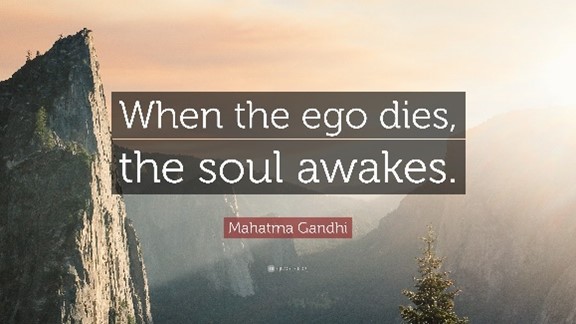What is Vertical Development?
Vertical development is the process of upgrading our own internal operating system so that we operate in more cognitively and emotionally sophisticated ways. It is the process by which we become better.
Vertical development is necessary for the improvement of the following characteristics, which I believe we should all aspire to: emotional intelligence, psychological flexibility, intellectual humility, patience, empathy, vulnerability, and infinite-mindedness, among others.
These are not characteristics that can be developed through the more common form of development: horizontal development, which is the improvement of knowledge and skills.
For more information about vertical development, watch this short video: What is Vertical Development?
How Do We Vertically Develop?
To vertically develop, or upgrade our internal operating system, it requires that we:
- Engage in some development practices that we are probably not familiar with
- Engage in other development practices that we are familiar with, but engage in them in different ways
In fact, I believe that there are four practices that we need to engage in to vertically develop. I will describe each below and then comment on how these practices differ from the horizontal development practices we are more familiar with.
Practice #1: Deepening Our Awareness
There are two principles associated with this practice that are important to understand:
- Deepening our awareness is the first step to vertical development
- The deeper we go with our awareness, the higher we can go in our vertical altitude
Fundamentally, the awareness we need to achieve is a clear sense of the quality of our current cognitive and emotional sophistication. This means investigating and questioning our beliefs, values, paradigms, and mindsets and where they come from.
This does not come naturally to most people. Most people:
- Don’t even think or have any desire to investigate the quality of their current cognitive and emotional sophistication
- Foundationally believe that their current cognitive and emotional sophistication is good or good enough
- Have an internal operating system that gets defensive and self-protective when investigating their current cognitive and emotional sophistication (For most people, questioning beliefs, values, paradigms, and mindsets feels unsafe)
Let me give you an example of how I have deepened my own self-awareness:
I used to have a relationship with money that was not very cognitively and emotionally sophisticated. I viewed wealth development as a fixed pie. I thought that in order to grow my wealth, I needed to save or capture as big of a slice of my pie as possible. This came from a place of fear and it made me frugal and selfish. It prevented me from investing in myself and my future (e.g., I was unwilling to take out a loan or be an entrepreneur), and it prevented me from investing in or giving to others. This made sense to me at the time because it protected me. But, after awakening to this belief/paradigm, investigating it, questioning it, and trying out other paradigms, I have been able to shift it to believe that wealth development is an expandable pie, where the goal is not to capture a big slice, but to expand the pie (it is better to have a small slice of a really large pie than a large slice of a small pie).
If we truly want to elevate our internal operating system, it is helpful to become conscious of:
- The quality of our mindsets
- Where are current mindsets came from
- Our fears
- Our insecurities
- Our limiting assumptions and beliefs
- The times and places we are more reactive (as opposed to thoughtfully responsive)
- The trauma we have experienced in our lives
- The different parts of us (watch this for more info: Parts Work in Therapy)
Practice #2: Improve Our Neurology
This is a practice that is unnecessary when engaging in horizontal development, and it is the practice that most people are unfamiliar with.
It is helpful to understand that our internal operating system is controlled and regulated by our body’s nervous system. So, when we are vertically developing, what we are actually doing is improving how our body’s nervous system functions.
We need to:
- Limit our reactiveness and improve our thought responsiveness
- Widen our window of tolerance
- Feel more safe and less anxious
- Develop the ability to get in better touch with our emotions, feelings, fears, and insecurities
Ultimately, these things involve rewiring the neural connections in our brain and the functionality of our nervous system.

How do we do this?
Our nervous system is a creature of habit. It likes to do what it has done in the past. But, it can change. We have just got to be willing to exercise and fine tune our nervous system functioning.
It is helpful to think of our nervous system like our muscles. If we want to strengthen our muscles, we need to recognize:
- Working out once won’t make us strong.
- If we want to become strong, we have got to work out our muscles again and again and again. It has to be a consistent practice.
The same thing goes for our body’s nervous system.
Good news: Working out our body’s nervous system is easier than working out our muscles. Research is finding that if we can spend 5-10 minutes a day exercising and strengthening our neural connections, we will see vast improvements in as little as a few weeks.
Some common exercises to engage in include:
- Meditation (I like to use the Insight Timer app)
- Journaling (I like to use The Five-Minute Journal)
- Gratitude practices
- Reading, watching videos, or having discussions related to specific beliefs, mindsets, or paradigms
- Working on improving your self-talk
(I have a host of resources for doing this type of work in my Mindset Library)
Practice #3: Practice New Paradigms
Practice is a really valuable part of the horizontal development process (gaining knowledge and skills). For example, to become a good golfer, I need to practice, practice, practice. In sales trainings, it is common for developers to facilitate role plays.
While the practice associated with vertical development is different, the principle is the same.
To vertically develop, we need to practice trying on new and different paradigms and mindsets.
For example:
- If I am a leader that commonly micromanages others (a signal of possessing limiting beliefs and fears that aren’t very cognitively and emotionally sophisticated), then I need to practice empowering and letting go
- If I commonly get defensive when I receive constructive criticism, I need to practice seeing constructive criticism as a gift
- If I get anxious when my kids are emotional, I need to practice calming myself down so that I can become present with them
Our world can be our teacher if we let it. If we can observe the instances where we become reactive, anxious, or withdrawn from various situations, we will find the places where we need greater cognitive and emotional sophistication (and a place to start practicing).
Practice #4: Coaching
There are two different ways to think about coaching when it comes to vertical development.
First, there are top-down approaches to improving our body’s nervous system. This means that in the process of improving our body’s nervous system, we can start at the top of our brain, with our cognitions, and move down into our emotions, and then further down into our feelings. The first three practices, in combination, are largely a top-down process for vertical development.
It is valuable to recognize that these first three practices are rather difficult to do on our own. Receiving vertical development coaching not only helps us with engaging in those practices, but such coaching can really help us speed the process up.
Such coaching could involve a friend, a business/leadership coach, or a therapist.
Second, there are also bottom-up approaches to improving our body’s nervous system. These are approaches where we start with the feelings in our bodies, move into our emotions, and then into our cognitions.
These approaches are necessary for people who have experienced trauma in their lives and now have a nervous system that has been inhibited by that trauma. Unfortunately, more than 70% of adults have lived through trauma that has inhibited the wiring of their body’s nervous system.
Unfortunately, it is extremely difficult, if not impossible, to work through past trauma and heal from it on our own. It generally requires a trained therapist to do this bottom-up work.
Some examples of specific therapy modalities that utilize this bottom-up approach are: eye-movement desensitization and reprocessing (EMDR) and internal family systems therapy. I have gained a huge amount of healing and value from both.
How These Practices Differ from What We Are Used To
When it comes to developing ourselves, we are most familiar with horizontal development, and generally are not very familiar with vertical development. The table below summarizes the differences between these two approaches:

From my experience, many organizations want the benefits of vertical development, but they only employ horizontal development practices. If organizations want to experience the benefits of vertical development, they need to engage in different practices.
The Benefits of Vertical Development
Why should we go through the effort to engage in these practices? Here is a short list:
- We become better people (e.g., parents, spouses, leaders, employees)
- We develop the characteristics of great people (e.g., emotional intelligence, psychological flexibility, infinite mindset, intellectual humility, patience, empathy)
- We become more capable of effectively navigating change, pressure, stress, uncertainty, and complexity
- We develop a greater capacity to elevate the people and organizations we serve
- We remove and overcome the shackles that hold us down and back (e.g., fears, insecurities, limiting beliefs)
- We become a greater positive influence within our spheres of influence
- We become more of someone others want to follow
- We become more value creators, people that have a massive influence on others and on the world
Next Steps
If you would like to help developing programming to help your leaders, managers, and/or employees vertically develop, let’s connect: Connect with Ryan.
And, if you are interested in receiving vertical development coaching for yourself, I would be happy to connect you with coaches (and possibly therapists) that might be able to help you. Either send me an email or contact me here.









